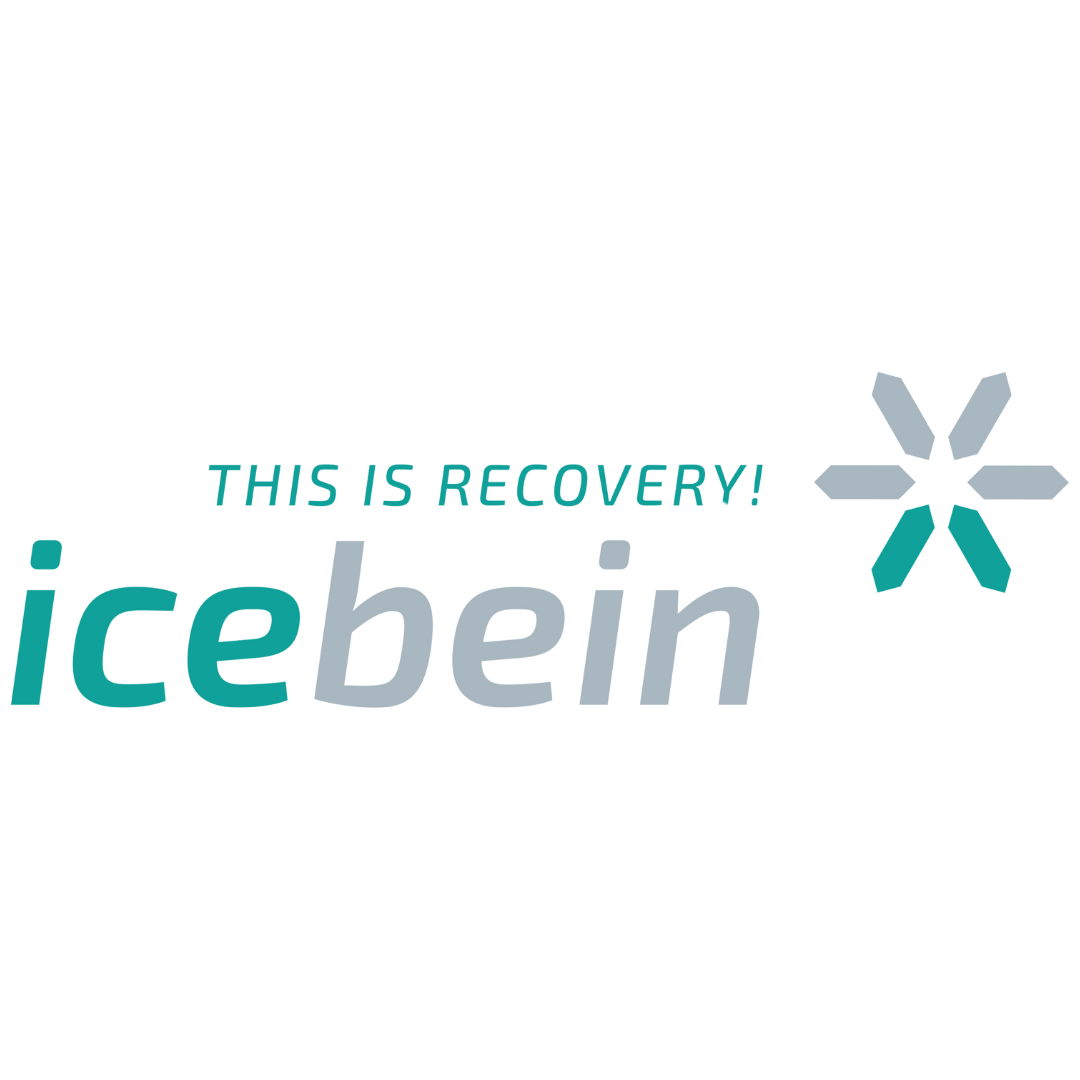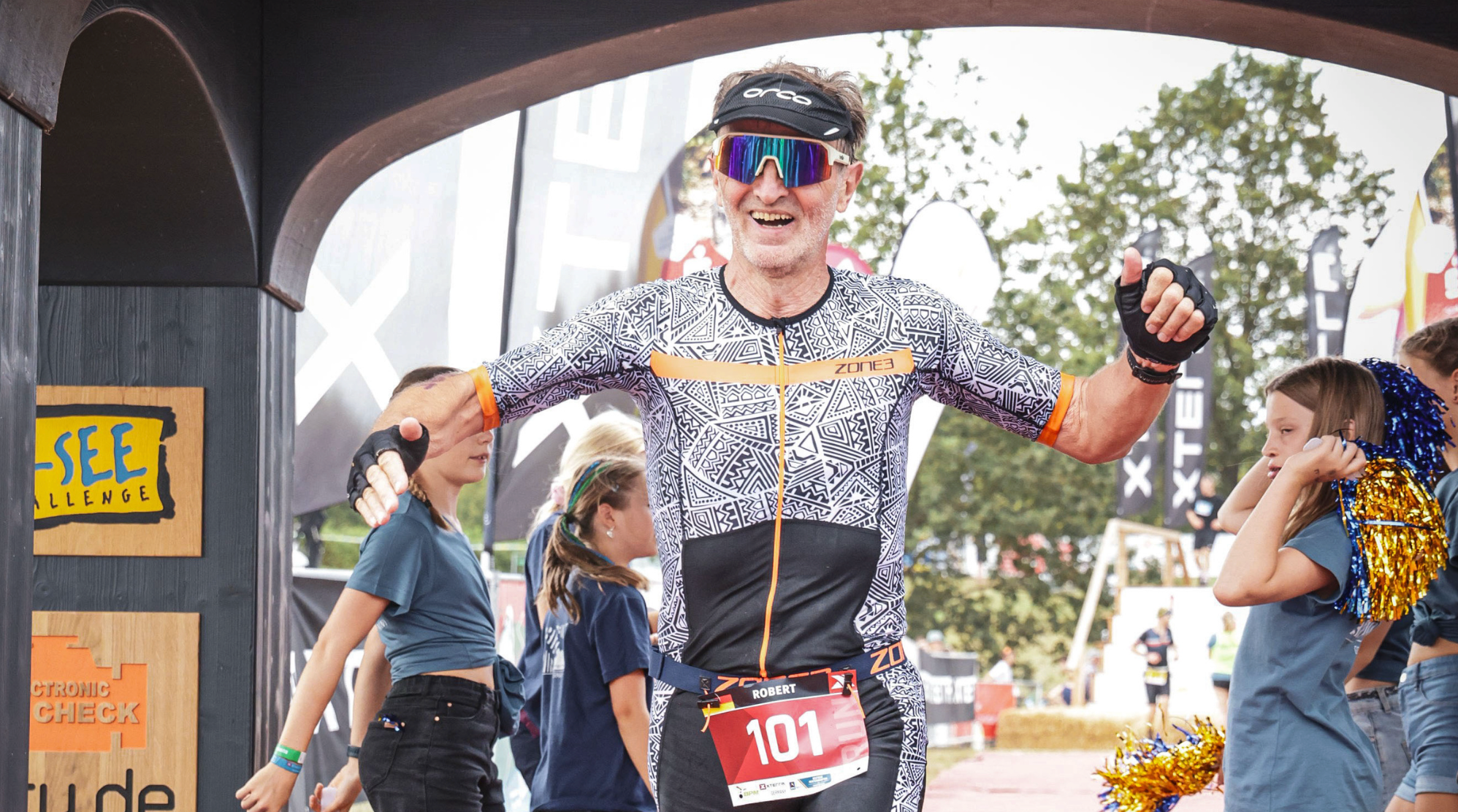After an impressive 2024 season and numerous successes, Robert Votteler has shown how to still be at the top even at the age of over 60. We have already spoken to him about it in an interview and reported in detail (you can access the interview here ). But what is behind these achievements? One thing is clear: it is not just the training that counts. It is the mix of clever planning, targeted regeneration and the joy of sport.
How exactly does Robert manage to stay fit and improve year after year? In this article, he gives us an insight into his training philosophy, the importance of recovery and his personal tips for age groupers who want to achieve their goals - and not lose the fun in the process.
Robert's training philosophy: structure meets flexibility
"My training follows a clear structure, but I always remain flexible," explains Robert. "I work with a 4-week periodization : I increase the load for three weeks, in the fourth week I reduce the volume and focus on active recovery."
This method allows him to make long-term progress without overtaxing his body - and, more importantly, he never loses the fun of it thanks to the breaks. He particularly emphasizes that each phase has different focuses: "At the beginning I work a lot on strength and endurance, later the focus is on intensive units, and shortly before a competition the training is scaled down so that I can start fresh."
But for Robert, training is more than just swimming, cycling and running: "Versatility is the key. I supplement my training with strength exercises, stabilization, stretching and working with the Blackroll. Actually, any activity that strengthens the body counts."
Another important point for Robert is work-life balance : "When I have appointments or everyday life is stressful, I don't put any pressure on myself. Periodization allows me to react flexibly. Sometimes it's enough to skip or postpone a session - that's more beneficial than overtaxing yourself."
The key to success: regeneration
"Without recovery, there is no performance," says Robert emphatically. "Especially at our age, regeneration is crucial to avoid injuries, protect health and simply have fun doing sports."
For him, regeneration is not just a rest day, but a conscious part of his training plan. "I take at least one rest day per week, sometimes two. I call one of them my 'pseudo rest day', on which I do easy activities, like walking or light stretching. This gives my body the time it needs to recover."
Robert's preparation goes far beyond training and regeneration, as he reports. He plans his preparation down to the last detail. "Triathletes are often real tinkerers - and so am I! It's not just about training, but also about preparing down to the last detail. This includes technique: you can be as fit as you like, but if your equipment isn't right, you're wasting a lot of potential. Especially if you want to be at the front, everything has to be perfectly coordinated - from your position on the bike to the optimal care of your equipment. I see this as another building block that contributes to success."
An important part of his recovery is icebein : "I use it 3-4 times a week during the training phase. It's not just the cooling that helps - this half hour is also a moment in which I consciously switch off, do nothing and relax. I use icebein to relax my legs, especially after tough sessions like long runs or intensive bike rides. It just feels lighter afterwards and I get into the 'flow' much better the next day. It's as if I'm giving my body a kind of restart."
But Robert often combines icebein with other methods: "For example, with the infrared sauna. First cool down, then go into the sauna - that's ideal, especially in the evening. After that, you're ready for the couch, and regeneration is in full swing."
In addition to targeted regeneration tools, Robert emphasizes the importance of listening to your body : "There are days when I notice that something is wrong - be it tiredness, a pulling sensation in my muscles or simply a feeling that my body needs time. In such moments, I consciously take a break or reduce the strain. This is not a weakness, but a strength. If you ignore this, you risk overload, injury or even illness. The balance between strain and recovery is crucial to staying healthy and efficient in the long term."
Another key point in Robert's approach is the off-season, which he plans at the end of each season: "After the competition phase, I consciously take 6-8 weeks to allow my body and mind to recover. But that doesn't mean that I do nothing at all. I simply reduce the amount of work to about 60 percent and do something completely different: hiking, a leisurely bike ride or simply activities that are fun and not so strictly planned. During this time, I can regenerate, but also mentally recharge. This phase is just as important to me as the intensive training blocks."
In addition, Robert pays attention to the little things that are often underestimated: "Good sleep is one of the most important components of regeneration. I also adjust my diet - during the competition phase I completely avoid alcohol, but I also allow myself to consciously enjoy myself. It's about balance."
Practical Tips for Age Groupers
Here are Robert’s tips at a glance:
-
Use periodization: Work in clear cycles in which workload and recovery alternate. This way you can remain efficient in the long term.
-
Plan an off-season: Give yourself 6-8 weeks at the end of the season in which you reduce the volume and also regenerate mentally. Use this time to try something new or just take a breather.
-
Regeneration is just as important as training: allow yourself at least one rest day per week and use active recovery methods such as stretching or taking a leisurely walk.
-
Try regeneration methods: Tools like icebein can help improve regeneration after intensive sessions.
-
Listen to your body: If something doesn't feel right, take a break. There's no point in working against your body.
-
Don’t neglect sleep and nutrition: Make sure you get enough sleep and eat healthily – these are the basics that will support your recovery.
-
Stay flexible: Life is unpredictable – adapt your training and don’t let yourself get stressed if something goes wrong.
-
Enjoy the process: Triathlon is a journey. Enjoy the progress, small successes and the community in sport.
-
Think about the technique: triathletes are tinkerers! Pay attention to your equipment, from bike care to the perfect position. Good preparation on a technical level can give you a decisive advantage in the competition.
Conclusion: Balance as a recipe for success
Robert's success shows that staying fit and productive as an age grouper is not a question of age, but of attitude. With a mix of structured training, targeted regeneration and mental composure, it is possible to achieve big goals even in old age.
For anyone who wants to be inspired: try out Robert's tips, take care of your body - and enjoy the journey that triathlon offers. It's never too late to learn something new and discover the fun of sport.



Fit as an age grouper: How do you stay successful in sports as you get older?